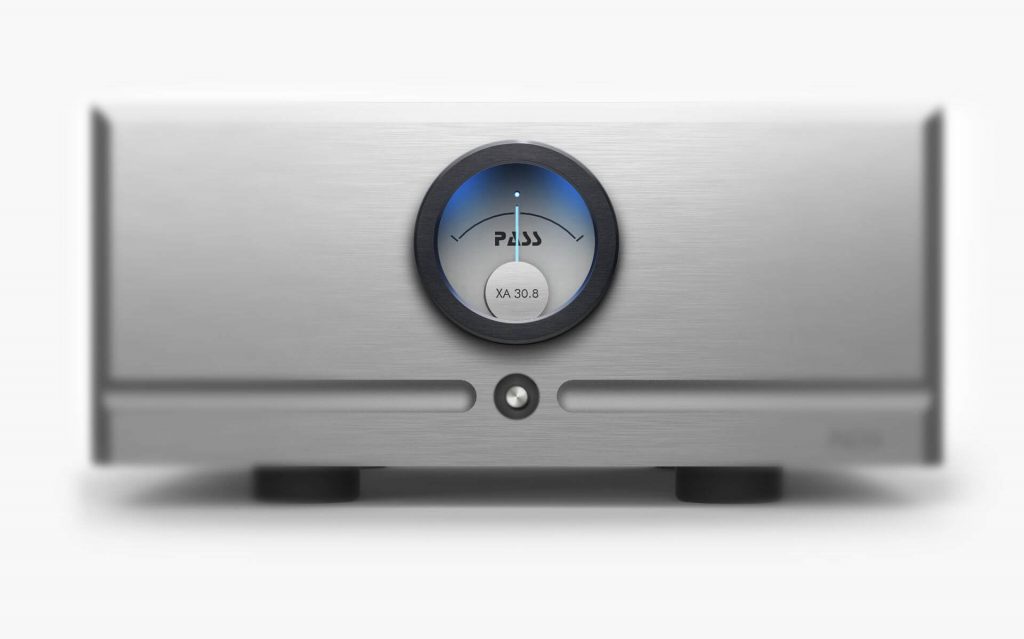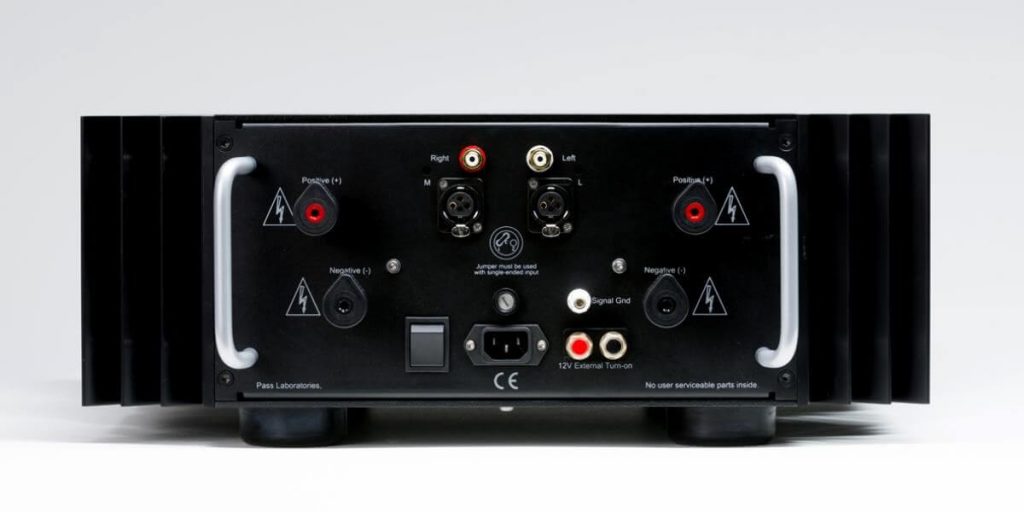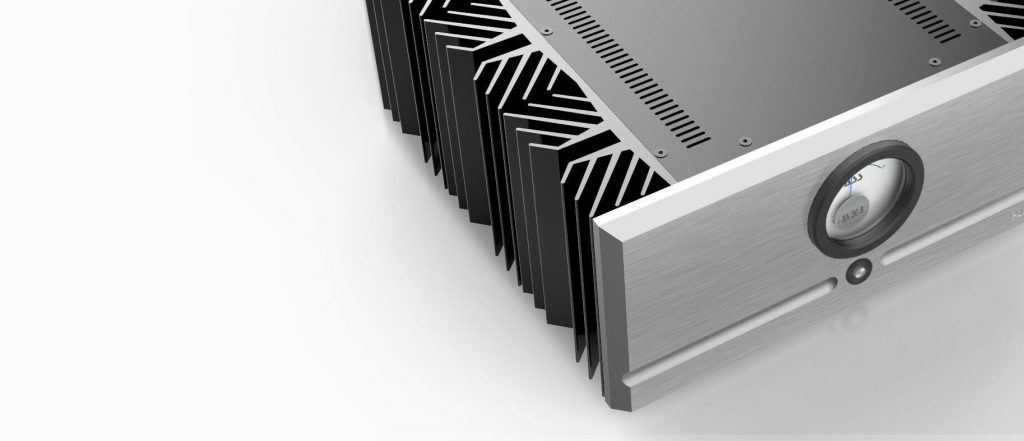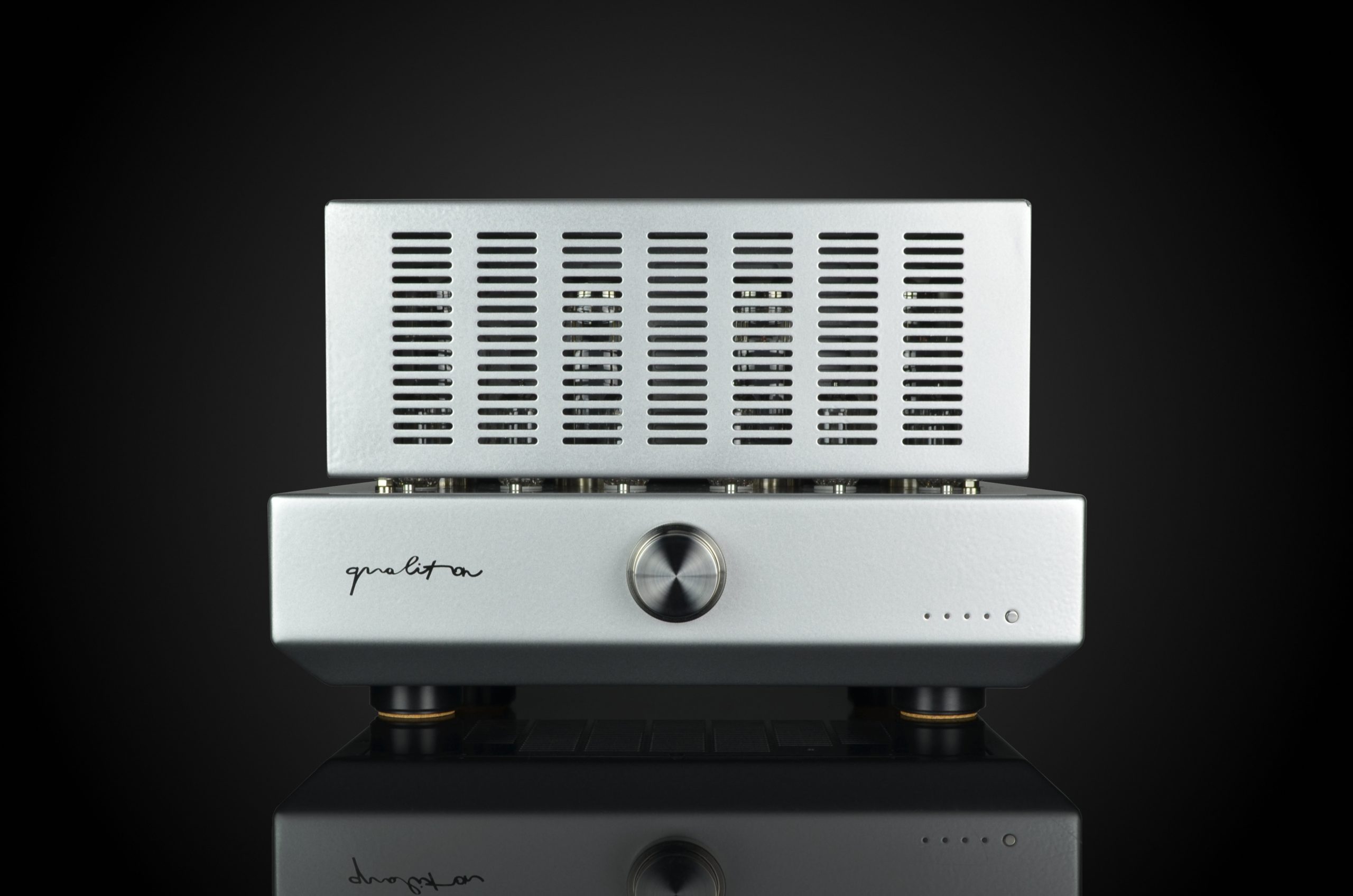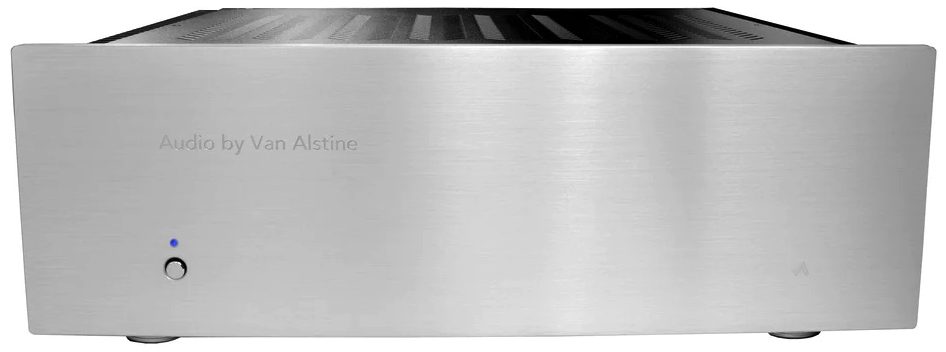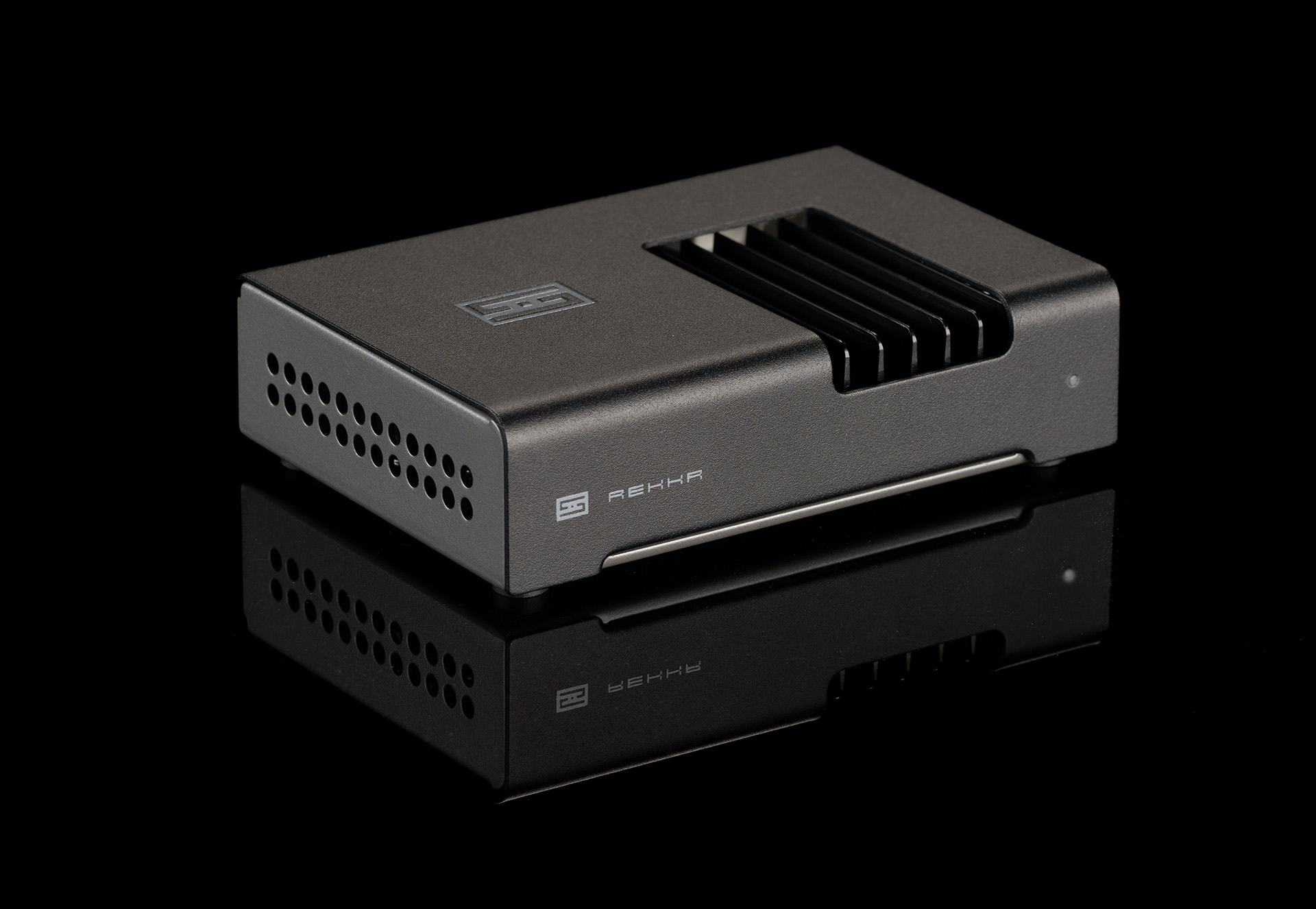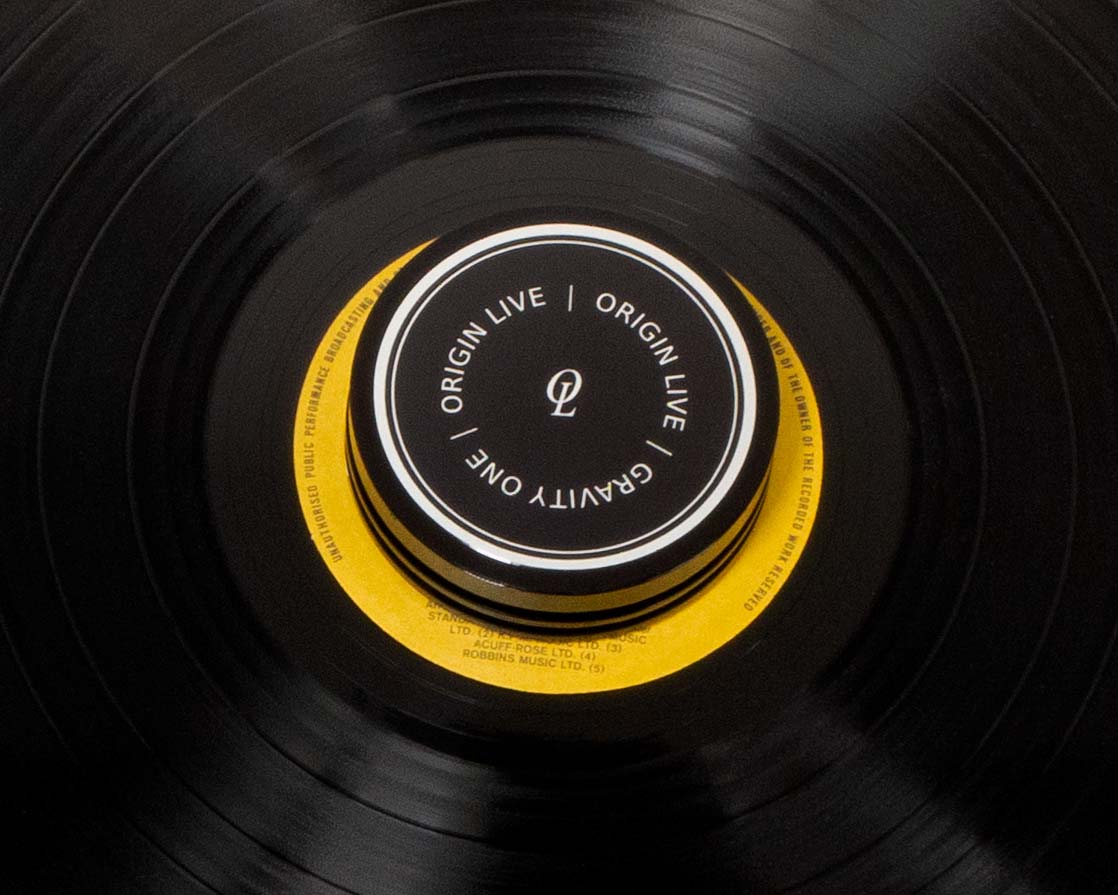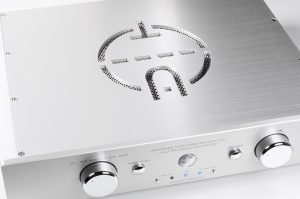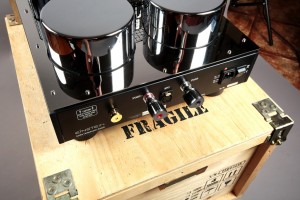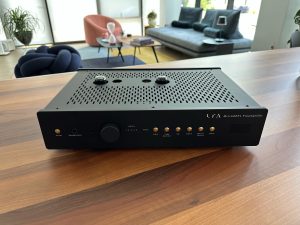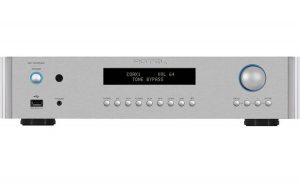During the initial days of my shelter in place, I stepped outside for a walk, only to find a short monolith in the middle of my driveway. It was a hulking, brown box, and obviously delivered by truck. No knock on the door, no ring of the bell... just something I discovered in my driveway—not even my porch! Initially I was aghast, thinking, someone could have stolen that! What a lazy FedEx driver, I thought. As I got closer, I saw the packing tape read "Pass Labs." When I tried to move the monolith to take it inside, its 90 pound weight eased my thievery concerns. That box would not have traveled far without a dolly. It was a Pass Labs' amplifier sent for review.
My wife and I got the box up a few steps and into the house. Despite its striking weight, and nearly two cubic feet of space left by a harried FedEx driver, the box showed only a small indentation in one corner, which required somewhat careful observation to notice. It's a reminder that cardboard's father is wood. While shipping a nearly 100 pound box may give your pocket book some concern, the box the amplifier arrived in suggests it will survive multiple trips with no trouble.
When I started to unpack the amplifier my back asked me if I was feeling lucky. That is, to lift and empty the container, and move around freely after that. I was not, so my wife returned to help me unbox the considerable bulk. Perhaps the feeling of "not lucky" heightened some anxiety as the box was labeled for Pass's class A/B amplifier, the X150.8. Dang, did Pass send a X150.8, and not the XA30.8 that was promised? My concern continued as the box within the box repeated the refrain. X150.8. Dang! I had wanted to listen to a Pass amp, and had waffled between the X150.8 and the XA30.8. While trying to work out what I wanted to hear, I recalled hearing Classe's DR3 class A amplifier in the 1990s and decided I wanted to hear the XA30.8, but here was the X150.8.
The long since retired 25 watt Classe DR3 amplifier was a self-contained fireplace, without the need for wood, though it was feverish for electricity. A space heater unlike any I'd had from an audio experience. The proximity of any body part to the DR3 was easy to tell because the heat emanating was substantial and evident. When I say substantial, I seem to recall seeing heat waves rise from the amplifier in my listening room.
The DR3 elicited magic from my Spendor SP7/1 speakers. Had I not been delusionally seeking the perfect amplifier I'd have bought the loaner DR3, kept the Spendors, and not run through another seven pairs of speakers, in addition to dozens of review samples. With the class A/B amplifiers I'd previously tried with the Spendors there was a single volume level that was "right." And that Goldilocks volume level changed from track to track on the same album. I'd never heard that before. Was it transparent? Yes. Easy to live with? No. The volume was either too low and the system sounded anemic, or too loud and audible distortion was unpleasantly evident. With the DR3, the Spendors sounded wonderful at numerous volume levels, and I found myself listening, with great satisfaction, at lower volume levels. If one could allow for the increased heat and electricity bills, it seemed class A was the superior design.
There's a zen saying that goes, "One whip to a smart horse, one word to a smart man." I, clearly, must plead to either not being smart, or in the alternative plead to being an inveterate audiophile. Well, if there is no jail time, I'd plead to both.
Over time, I've imagined that class A/B designs need to play loud to show their best. What would serve me now? I repurchased Gamut L5s I had in 2005 for my previous room. That room was rather voluminous, more than 5800 cubic feet, before adding the rooms it opened into. I needed more speaker than my two way ATCs could provide there. However, shortly after I purchased the Gamuts we moved house, and my new listening room is about 1/3 of the volume. Ceilings are now 7.5' versus an averaged 11' ceiling. My new room is entirely enclosed and does not open into other rooms. In my old room, I'd have surely sided with a class A/B design, based on my intuition, rather than a concrete calculation.
Would I still need a high powered class A/B or would a class A design be preferred in my new room? All this was tumbling through my mind as my wife and I worked our way through turning over each successive box to empty the wrong amplifier. With the amplifier finally pouring out, I was somewhat relieved to wee the amplifier face read "XA30.8." Phew! The X150.8 might well have been a better match, but it was not the experiment I wanted to conduct. With my wife rejecting further requests to move this heavy, sharp edged turtle of an amplifier, I placed four moving pucks under the XA30.8 to properly situate it.
For those who like with bling, the XA30.8's aesthetic will not add to your quiver of garish, er, "proud" looking gear. This is, however, a large item. Whether there is a value proposition here or not will take some time and examination of priorities to determine. But, for your money, you get an amplifier only a little bit bigger than my Parasound five channel amplifier, though it is another 1/3 taller. The heat sinking is substantial, elaborate, and necessary. It may not appeal to "fine" or delicate interior design, but its overall appearance is understated, with an "intelligent" look. Park this item under the masculine appearance.
The visual design of the amplifier gave me a sense that Pass did not consider cutting corners on materials. Speaker binding posts are large, well spaced, and easy to use, with a "clutch" to keep you from over-tightening, when the intended torque is reached, continued twisting does not yield a tighter fit. The amplifier's instructional scripts on the back are nicely presented, quite legible with the sense they're written to be read and understood unlike late night advertising disclaimers that are read to satisfy a legal requirement, not intelligibility.
The XA30.8 has been well covered in a number of places. And we should all be thankful for that, as I'm an audio ignoramus. My dad designed amplifiers that controlled nuclear fusion reactors. Despite his assurance I knew more than I thought, the more I write about audio the more often I have been corrected; it is apparent I know very little. Accordingly, I avoid explanations, except where necessary and... unfortunately for you, some explanation is necessary here. The XA30.8 is a class A amplifier. What, someone, somewhere, might ask is that?
Are you familiar with the world of bicycle "fixies"? They're so named because the pedals (drive train) are fixed to the rotation of the wheels, similar to how pedals are directly fixed to a tricycle's rims. To make this a little more plain, with a trike, whatever speed the front wheel spun, that was the speed the pedals spun at... (watch this), because they were fixed to one another. Riding on flat surfaces or uphill on a fixie will seem mostly the same as with a normal bike, except for the part where your legs never stop moving. Downhill? No respite, more spinning and probably your legs burn. There is no break in the action and you're going to heat up, whether you go uphill, flat, or even down downhill. Alright, that's a flawed analogy, but maybe there's something illuminating for someone, somewhere.
Class A amplifiers are sort of like fixies. The amplifiers are designed such that the transistors are "on" all the time. If there is a signal to the amplifier? The transistors in your amp are working, full blast. Amplifier on, but no signal from your preamp? The transistors are working, full blast. Much as your legs will heat up because they never stop moving, a transistor in this class never shuts down. Thus, class A amplifiers are coupled to lots of heat sinking and that adds to the inherent manufacturing costs. You are likely, also, to encounter higher electricity bills.
From Whence?
Nelson Pass is the designer and namesake of the company. Pass traces his roots back to ESS, the manufacturer of Heil tweeters from the 1970s in Sacramento, California. Pass was also responsible for Threshold Design amplifiers, another brand that was not shy about amplifier size or avoided class A amplification. A UC Davis Aggie, Mr. Pass studied physics at the midpoint between San Francisco and Lake Tahoe. Pass, the company, has not moved far from Davis, staying nearby in the beautiful, if rock strewn, Auburn, California.
Initial Listening
Initial startup was without issue. Though it did require some change of norms for me. I've been a fan of balanced connections, as my active reference speakers for the past ten plus years have been balanced. I've sought and used balanced connections for their convenience. For the uninitiated, RCA/single ended connectors rely on friction to stay in place. Balanced connections literally lock in place. Balanced connections also feature common mode noise rejection, so they should be inherently quieter. But, Class A, as I understand it is inherently single ended. So, I started with single ended Kubala Sosna Expression interconnects and a much more pedestrian twisted pair of Romex speaker cables. Reviewers, in good faith, trying to make a point clear may belabor a point leaving their impressions somewhat exaggerated. I can see that from my writings. Of course, readers also misconstrue what's been said, so... legit cave.
Right out of the box, you've probably read this amp should have sounded bad and needed months to settle in. It didn't. It was superior to the 20+ year old five channel Parasound amplifier I've used the past ten years for my center channel. The latter was warmer and fuller sounding, though not by a lot, but also exhibited less detail. The Pass's detail was a bit angular and rough, but... given a choice, the Pass was the natural choice within five minutes of listening. Once I was sure the amplifier was working, I let it sit and reach its thermal stasis. I left it on continuously for five days, listening and ignoring its "birth."
The longer the XA30.8 was on, the better I thought it sounded. If my perception is to be trusted, transients became less chunky or fragmented, tone became a bit more burnished, though timbre, which I believe is a cousin of tone, was not significantly more threshed out. As I waited for the amplifier and me to settle in, I found myself worrying about our electricity bill. Otherwise, the Pass settled into my system into a fairly happy dating relationship.
Another Day
I borrowed Purist Audio Design Neptune speaker cables ($2905/2 meter pair) from Dave Clark. They sounded quite good for the short time I used them. They were massive and resistant to staying fixed in place. They quickly slipped out of my speaker terminals a few times til I got bold enough to really exert pressure on the binding posts. So I thought. Within a day the Netptunes slipped out of the binding posts again. I swapped in a pair of Audioquest Castle Rock bi-wired cables. ($1799). These surrendered to the will of my five way binding posts, but were slightly harder to work with due to more mechanical stiffness, a new but resolvable problem. They both sounded better than my twisted pair of Romex, so... one does what one must. I have trouble believing that the costs of making speaker cables is anywhere equivalent to the cost of building an amplifier, and so I am bothered that I had to resort to such expensive cables. But, I'll also acknowledge that they did sound superior.
After about three hours of warm up, the AQ cables provided more weight and image solidity than the Romex, with detail emerging with greater separation from sounds at the same frequency and time, dynamic shading "popped" more obviously, if you will. Something also popped, at least in my imagination while listening to Get Happy by Pink Martini.
Image is the property of Pink Martini
Pink Martini has two female singers: China Forbes and Storm Large. The former is the original group vocalist. Forbes' vocal chords hemorrhaged and she stopped singing for a year, Large was hired to replace her. They now share singing duties. Large is, or was, a "rock" singer, which might mean she was a shouter, though she does not sound that way live—we've seen iterations of Pink Martini live five or six times, with one, the other or both singing.
Forbes is an able singer. Large is a powerful singer. What emerged over several tracks (IME) was somewhat surprising. Large's tone is cleaner, purer, and less wispy. Forbes, though not a competitor with Billie Holiday for emotion in her singing, is simply more emotionally engaged than Large. Yeah, so what, you might be thinking. Differences between singers are rampant, right? Well, I think a difference emerged in how they sing, this emerged without trying to distinguish such a difference. What seemed to occur to me, is how they hold notes, i.e. hold a note longer than "strictly necessary" versus speaking.
Forbes's singing stays emotional, as though she's emotional for the entire time she's singing, either a word or a song. Experientially, it's as though she can look at the emotion, steadfastly, and communicate it. Large's vocalization stays consistent, but there is a sort of winking of the emotion or consciousness, as though she's focused, if you will, on the note and not the emotion. So, songs sung by Large seem to wink at songs' emotions, rather than look at them steadily and deeply. Here's a case of belaboring a point. I've never noticed this before and articulating this succinctly and in a slightly entertaining way is... a challenge. Perhaps no one else will notice this, but I did. It's part of communicating my experience of the amplifier and my audio ecosystem. Can this be reproduced elsewhere? I have no idea, this may well be my audio fetish or insanity. I do find myself appreciating the emotion that some singers can deliver, as noted above with the XA30.8.
For instance, I can hear Dusty Springfield in Diana Krall's singing. I also understand why Dusty was attractive to audiophiles. She's a singer of the less is more school. Less is more suggests nuance, I hear some of that with my digital copy of Casino Royale. (Varese Sarabande - VSD-5266) To my ears, she's more aware of ennui than able to communicate it. Diana Krall... maybe even less aware and perhaps thinking (singing) ennui is boredom, because she can sound boring as a singer. She's surely a very talented piano player, but... a friend who teaches vocals and piano said that the piano calls for an analytical frame of mind, and singing calls for the emotional part of the brain. She also said it's the exceptional person who can bridge the two. In my estimation in this system, neither Dusty nor Diana bridge the gap. Dusty's day is done and on what I've heard, she knows about, but doesn't sing from ennui. Diana? Today? Send her a postcard so she knows about it.
These are my initial impressions of the XA30.8. I'll return shortly with further thoughts.
XA30.8 Amplifier
Retail: $6800
Pass Labs




